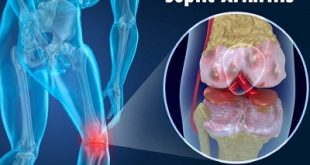What is primary amoebic meningoencephalitis?
Primary amoebic meningoencephalitis (PAM), also called amoebic meningitis, is a serious illness. It causes inflammation of the brain. An amoeba (Naegleria fowleri) causes PAM. The amoebas live in warm, fresh water and soil. Infection often happens during water-based recreational activities. Although many people have contact with the amoebas, only a small number of people develop PAM.
Transmission of primary amoebic meningoencephalitis
Infection with Naegleria fowleri typically occurs when the ameba enters the body through the nose. The ameba travels up the nose to the brain and spinal cord where it destroys the brain tissue causing the disease primary amebic meningoencephalitis (PAM). Generally, exposure to the ameba occurs when people use warm freshwater for vigorous activities like swimming, diving, or other rigorous activities in freshwater. Two cases of PAM in the USA have been linked to the use of household tap water for irrigation of sinuses. It is unknown why certain persons become infected with the amebe while millions of others exposed to warm recreational fresh waters do not, including those who were swimming with people who became infected.
Pathophysiology
Primary Amebic Meningoencephalitis (PAM) can occur in previously healthy young individuals exposed to warm, especially stagnant, fresh water. The portal of entry by the amoebae is through the olfactory mucosa and the cribriform plate. The pathophysiology is thought to be due to an amplified host immune response. This immune response traverses the blood brain barrier, causing an inflammatory reaction and subsequent parenchymal damage. It is thought that N. Fowleri causes an acute inflammatory cytokine response, whereas Acanthamoeba and Balamuthia spp. cause a type IV hypersensitivity reaction. These inflammatory responses contribute to neuronal damage and subsequent irreversible brain damage.
What causes primary amoebic meningoencephalitis?
The amoeba Naegleria fowleri causes PAM.
The amoebas grow in untreated water. They grow best in warm water, between 25°C and 40°C.
You can find the amoebas in:
- Still water, such as lakes and rivers
- Hot bore water
- Long surface pipes
- Water hoses
- Spas
It’s very rare to get PAM from a swimming pool.
PAM infection happens when water with Naegleria fowleri travels up your nose. This might happen when you:
- Jump into water
- Dive into water
- Fall into water
The amoebas make their way to the brain. In the brain they destroy brain tissue and cause inflammation.
Even if water with the amoebas goes up your nose, your chance of getting PAM is still very small.
You can’t get PAM from:
- Drinking water with the amoebas
- Another person
Risk Factors of primary amoebic meningoencephalitis
Diving or jumping into the warm, usually stagnant, fresh water during periods of high-water temperature and low water levels.
- Submerging the head under water during religious practices.
- Putting head under the water in hot springs and other untreated thermal waters.
- Digging in, or stirring up, the sediment while taking part in water-related activities in shallow, warm freshwater areas.
- Irrigating sinuses (nose) using contaminated tap water.
Symptoms and Complications
In its early stages, symptoms of PAM are similar to symptoms of bacterial meningitis.
Symptoms of PAM start 1 to 12 days after infection.
The initial symptoms include:
- Headache
- Fever
- Nausea
- Vomiting
Later symptoms include:
- Stiff neck
- Altered mental status (confusion)
- Lack of attention to people and surroundings
- Seizures
- Hallucinations
- Coma
After the start of symptoms, the disease progresses rapidly and usually causes death within about 5 days (range 1 to 18 days).
Primary amoebic meningoencephalitis – Diagnosis
- A spinal tap and analysis of cerebrospinal fluid
- Brain biopsy
Doctors suspect primary amebic meningoencephalitis in people who have symptoms and have been swimming recently in fresh water, but the diagnosis is difficult to confirm. Imaging tests, such as computed tomography (CT) and magnetic resonance imaging (MRI), are done to rule out other possible causes of the brain infection, but they cannot confirm that amebas are the cause.
A spinal tap (lumbar puncture) is done to obtain a sample of cerebrospinal fluid (the fluid that surrounds the brain and spinal cord). This test can exclude some other possible causes of meningitis and brain infection, but doctors are not always able to find the amebas in the sample.
Other techniques are available in specialized laboratories and are more likely to detect the amebas. They include the following:
- Culture (growing microorganisms in a laboratory until there are enough to identify)
- Polymerase chain reaction (PCR) to check for the genetic material of the ameba
- A biopsy of brain tissue that is stained and examined under a microscope or analyzed using PCR
Treatment
- A combination of drugs
Because few people survive, determining the best treatment for primary amebic meningoencephalitis is difficult.
Doctors typically use a combination of several drugs including
- Miltefosine
and one or more of the following:
- Amphotericin B (typically used to treat fungal infections—an antifungal drug)
- Rifampin (an antibiotic)
- Fluconazole or the related drugs voriconazole, ketoconazole, or itraconazole (antifungal drugs)
- Azithromycin (an antibiotic)
Although miltefosine can cause birth defects in pregnant women, doctors often use it anyway because primary amebic encephalitis is usually fatal without treatment, so the potential benefits of therapy outweigh the risk. Women of childbearing age who are taking this drug must use effective birth control measures.
Prevention of primary amoebic meningoencephalitis
Naegleria fowleri cannot survive in water that is clean, cool and chlorinated.
To prevent infection:
- Avoid jumping or diving into bodies of warm fresh water or thermal pools
- Keep your head above water in spas, thermal pools and warm fresh water bodies
- Empty and clean small collapsible wading pools daily
- Ensure swimming pools and spas are adequately chlorinated and well maintained
- Flush stagnant water from hoses before allowing children to play with hoses or sprinklers
- If you are using unchlorinated water:
- don’t allow water to go up your nose when bathing, showering or washing your face
- supervise children playing with hoses or sprinklers and teach them not to squirt water up their nose
- Potentially contaminated water should not be used for any form of nasal irrigation or nasal lavage including Neti (an Ayurvedic practice of nasal cleansing)
 Diseases Treatments Dictionary This is complete solution to read all diseases treatments Which covers Prevention, Causes, Symptoms, Medical Terms, Drugs, Prescription, Natural Remedies with cures and Treatments. Most of the common diseases were listed in names, split with categories.
Diseases Treatments Dictionary This is complete solution to read all diseases treatments Which covers Prevention, Causes, Symptoms, Medical Terms, Drugs, Prescription, Natural Remedies with cures and Treatments. Most of the common diseases were listed in names, split with categories.







